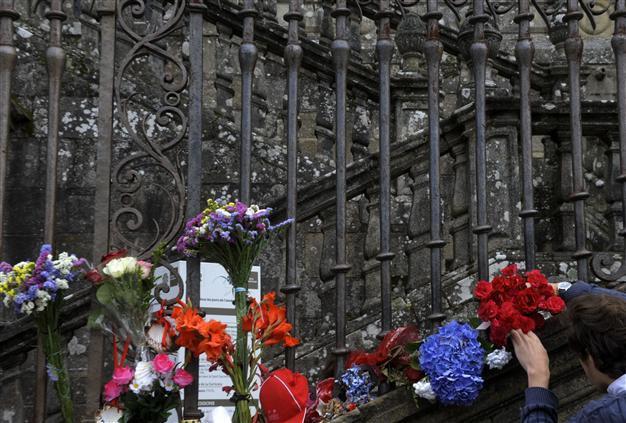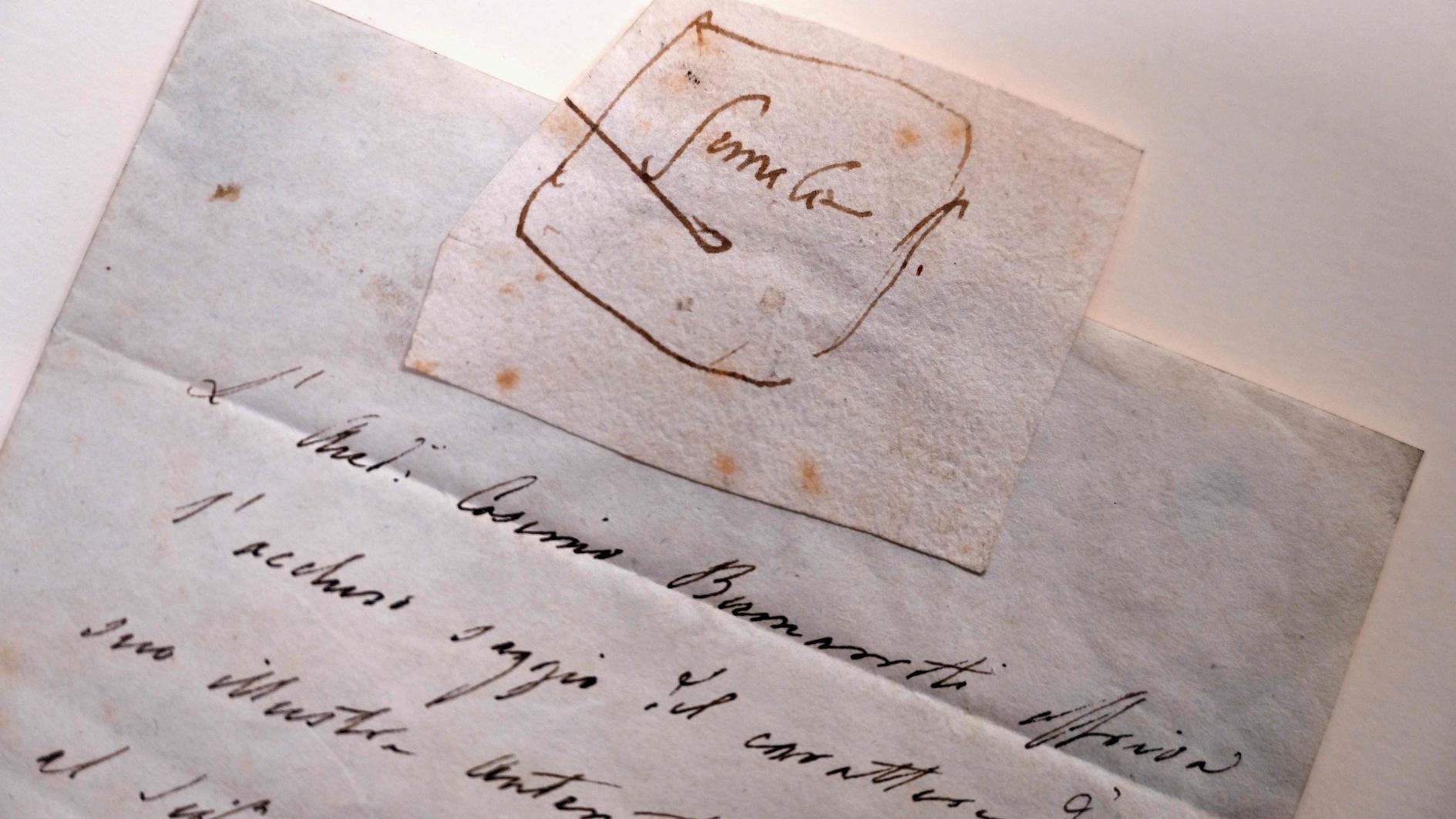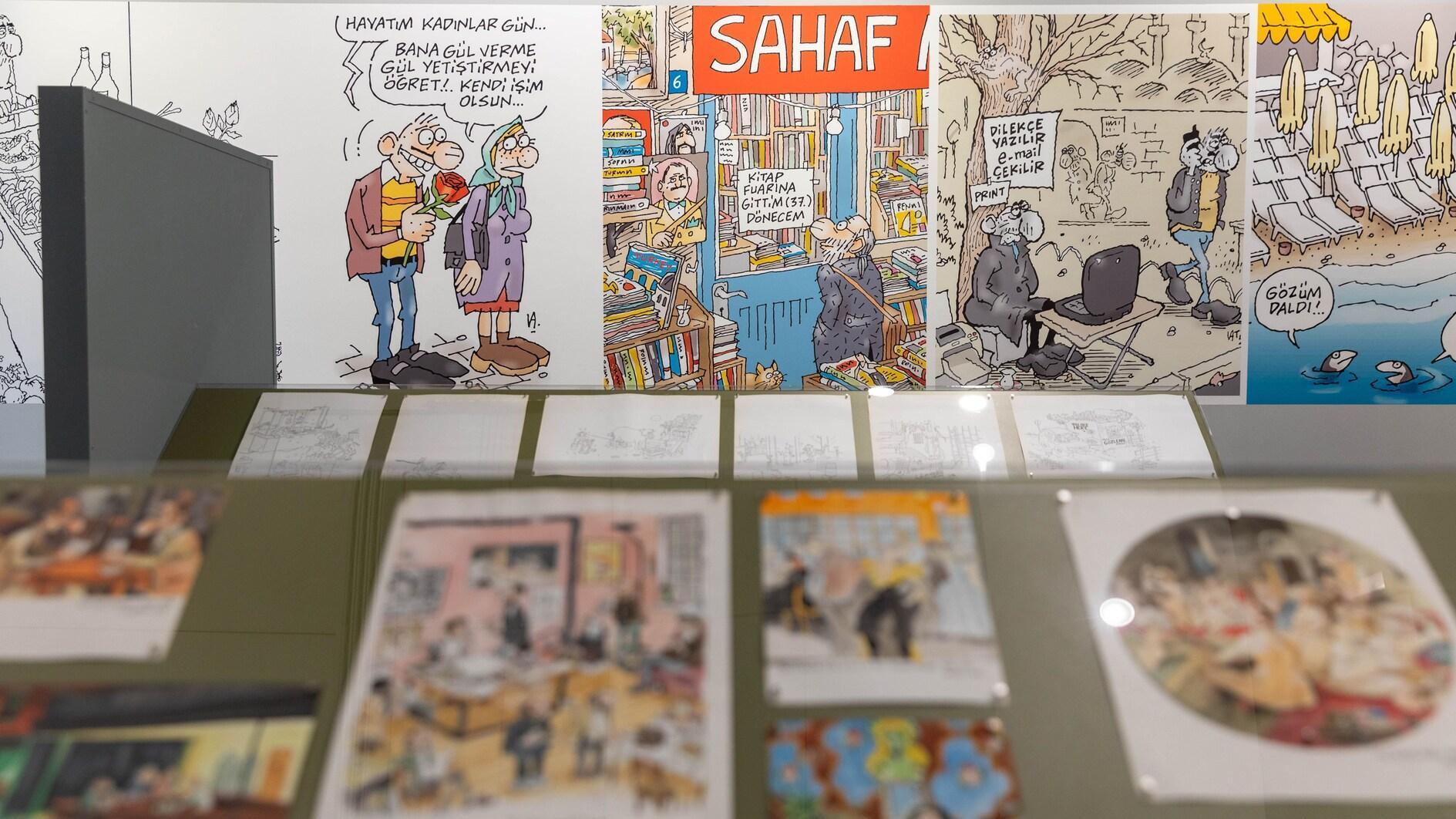Spain mourns crash victims as train driver charged
SANTIAGO DE COMPOSTELA - Agence France-Presse

A man displays flowers at the fence of Santiago de Compostela cathedral to honour the victims of a train accident, at Obradoiro square, in the northern Spanish city of Santiago de Compostela, on July 29, 2013. AFP PHOTO/ MIGUEL RIOPA
Mourners gathered for a memorial service Monday for the 79 people killed in Spain's worst train disaster in decades, after the driver was charged with reckless homicide.The judge released the driver on bail, charged with 79 counts of reckless homicide, said the regional high court in Santiago de Compostela, the northwestern pilgrimage city where the crash occurred on Wednesday.
Francisco Jose Garzon Amo, 52, admitted to the judge he had a "lapse" of concentration while driving the train, Spanish media reported on Monday, citing court sources.
The heir to the Spanish throne Prince Felipe and Prime Minister Mariano Rajoy, a native of Santiago, were scheduled to attend the service at 7:00 pm (1700 GMT) in Santiago de Compostela Cathedral, a popular Roman Catholic pilgrimage destination.
Garzon left court after Sunday evening's two-hour hearing by car for an unknown location. Press photographs showed him in handcuffs, a gash on his head from the accident and his eyes hidden behind sunglasses.
He has been ordered to report to court every week and forbidden to leave Spain for six months. His train-driving licence has been suspended for six months.
Hours before the court hearing began, regional health officials said a woman critically injured in the crash had died in hospital, bringing the toll to 79.
The latest victim was a US national, the Galician High Court said, bringing to nine the total number of foreigners who were killed.
Seventy people were still in hospital, 22 of them in serious condition, health officials said.
Mourners placed flowers and candles at the cathedral gates, with handwritten messages of condolence.
"We are really feeling the impact. People are praying. It is a great tragedy," said 70-year-old Marlen de Francisco, a souvenir seller at the cathedral square.
"All day people are asking me for note paper so they can write messages and put them on the cathedral gates." Reports have suggested the train was travelling at more than double the speed limit when it flew off the tracks on a sharp bend and ploughed into a siding.
El Pais newspaper, citing investigation sources, reported that Garzon had told railway officials by radio that the train had taken the curve at 190 kilometres (118 miles) an hour -- more than double the 80 kph speed limit for that section of track.
The president of the Spanish rail network administrator ADIF, Gonzalo Ferre, said Garzon had been warned to start slowing the train "four kilometres before the accident happened".
State railway company Renfe said the driver had been with the firm for 30 years, including 13 years as a driver, and had driven trains past the spot of the accident 60 times.
Friends and colleagues of Garzon have defended him, including UGT labour union official Angel Gonzalez who described him as "an excellent professional".
El Mundo newspaper on Sunday printed extracts from the train's route plan, indicating that ahead of the bend the train passed from a stretch of track with a speed limit of 220 kph to one with a limit of 80 kph.
Some media reports described Garzon as a speed freak who had once posted a picture on his Facebook page of a train speedometer at 200 kph.
Renfe said the train had no technical problems and had just passed an inspection on the morning of the accident.
But the secretary general of Spain's train drivers' union, Juan Jesus Garcia Fraile, told public radio the track was not equipped with braking technology to slow the train down automatically if the driver failed to do so when required.
El Mundo quoted Ferre as admitting that the accident could have been avoided if the track had been equipped with such a system, which is in place on many high-speed railways.
Cranes and trucks finished heaving away the wrecked train carriages from the track on Sunday on the outskirts of the city and rail traffic resumed there early Monday at low speed.
















